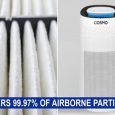Ink has been a part of daily life for hundreds of years. We’ve used it to write and to draw, to convey information and to express ourselves.
But while the concept has remained the same, the tools and ingredients used to make it have changed. From dyes to water, ink has a surprisingly complex list of ingredients. Understanding how ink is made, and what it’s made from, can help you better understand how it works and how to keep it safe.

One of the most common ingredients, particularly in printer ink, is polyethylene glycol. What is that, you might wonder. And why is it used? Let’s take a look.
Polyethylene Glycol in Ink
What is polyethylene glycol? Called PEG for short, it’s a polymer made of carbon, oxygen, and hydrogen. PEG has a huge array of applications and is used in everything from medicine to industrial manufacturing.
PEG is a popular tool in many industries because it’s easy to manufacture and manipulate. On a molecular level, PEG has a very simple structure. This makes it very easy to make slight modifications to it in order to change its behavior. You can make it stronger, or more reactive, for example. This makes it a very versatile compound.
It’s also a common ingredient in printer ink. While it’s far from the only ingredient in ink, there’s a reason it’s so widely used. In ink cartridges, PEG is used to prevent the ink from clogging and getting stuck in the cartridge.
It does this by helping to make sure that the different dyes that give the ink its color stay in the solution with the water that makes up the base of the ink. On their own, these dyes have a tendency to want to evaporate from the water. This leads to the dye catching and accumulating on the inside of the cartridge. Over time this buildup can block the cartridge entirely, preventing the ink from being used.
PEG is added to the solution to help prevent this from happening. By slowing evaporation, it protects the integrity of the dye color and helps protect the cartridge from clogging.
PEG is used because of its simplicity and effectiveness. You can even make an ink solution yourself to see the effects firsthand. Chemical distributors, such as Umbrella Chemical, sell PEG for commercial distribution. If you’re curious to see the effects yourself, you can always buy some and test it out.
PEG: A Useful Tool
Ink may not be the only use for PEG, but it’s one of the ones we use most often in our day to day life. From printing to manufacturing and even medicine, PEG is an unsung hero in modern life, used in countless applications.
If you’re curious to read more about things like PEG, or other fascinating information, be sure to check out the rest of our site. We regularly post articles detailing tips, tricks, and interesting tidbits to help you in your daily life.




